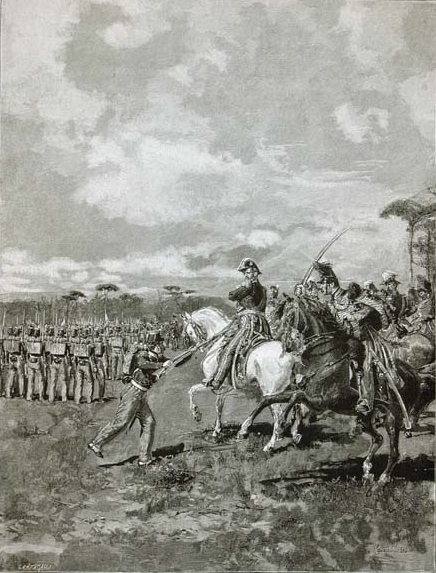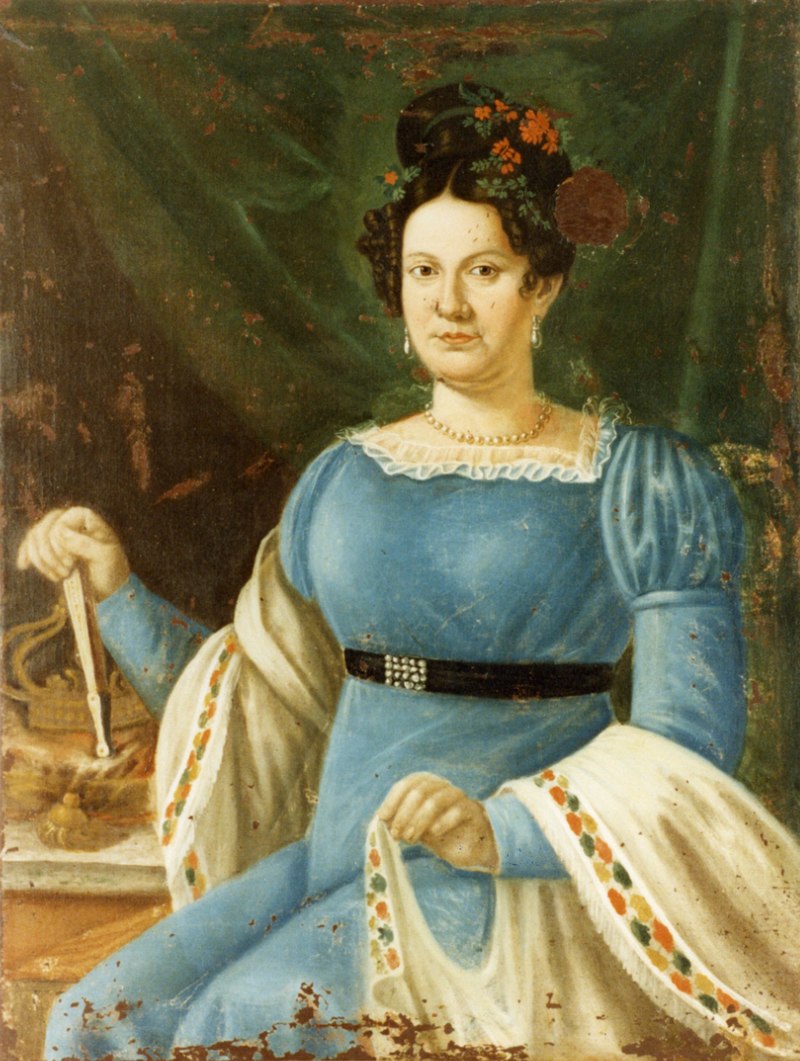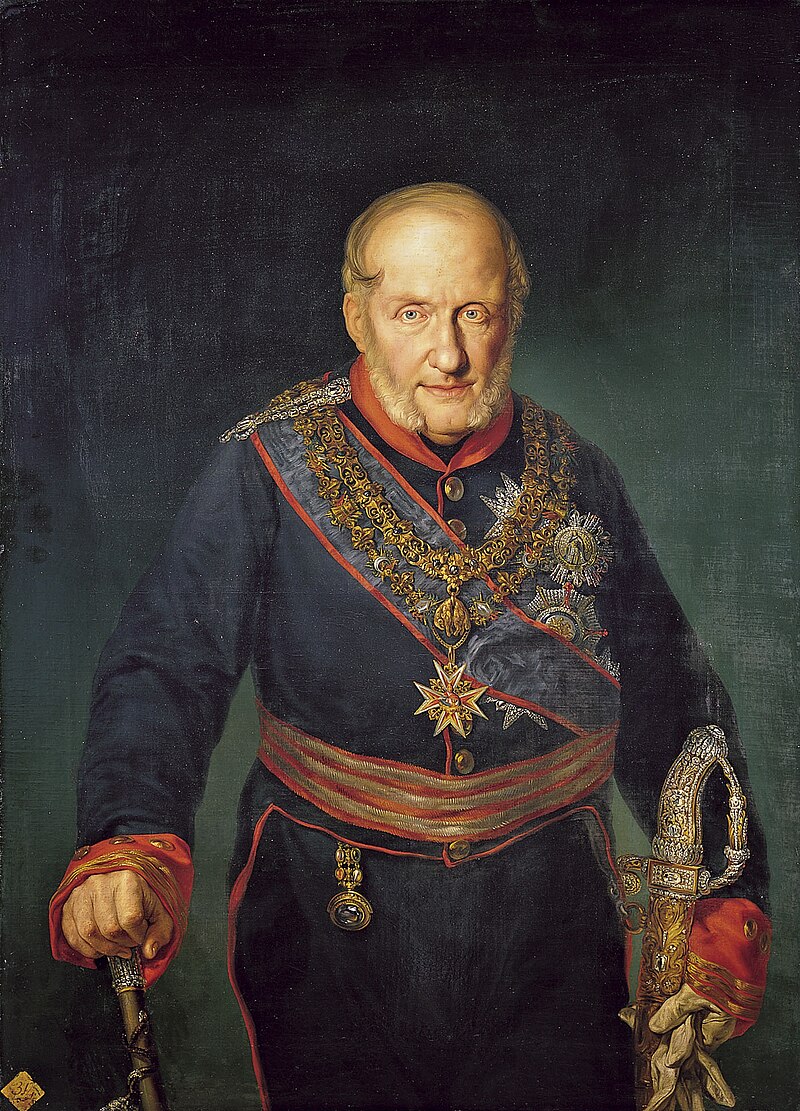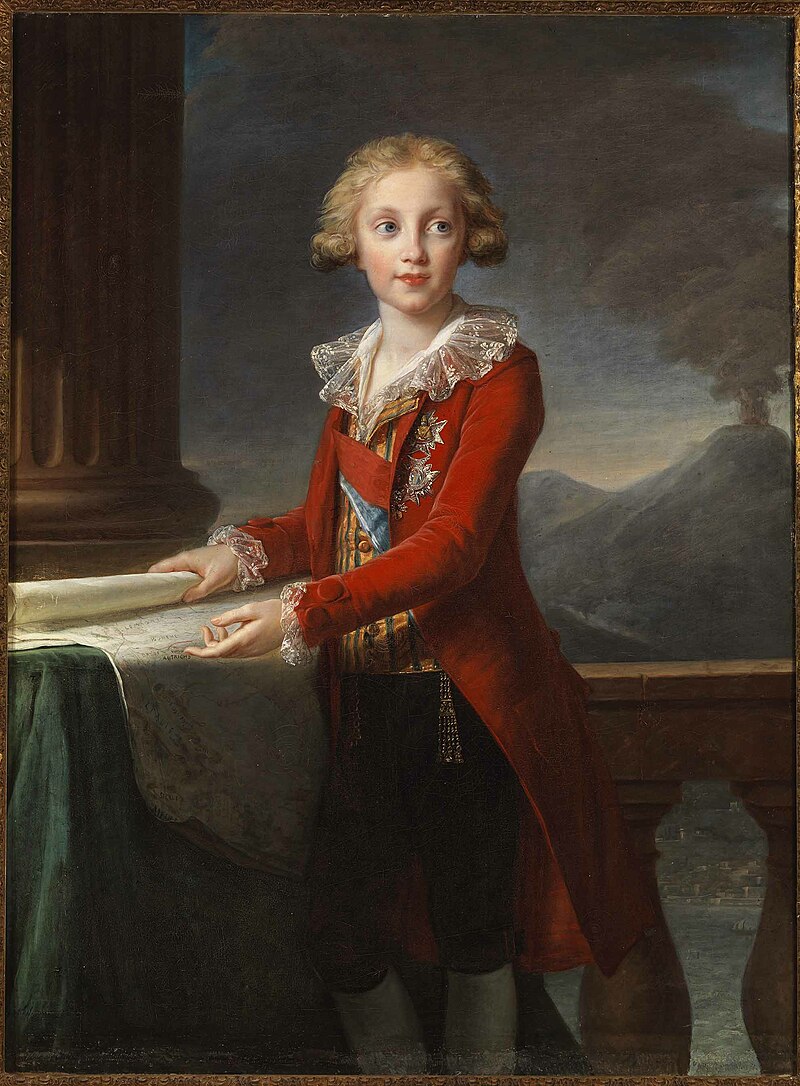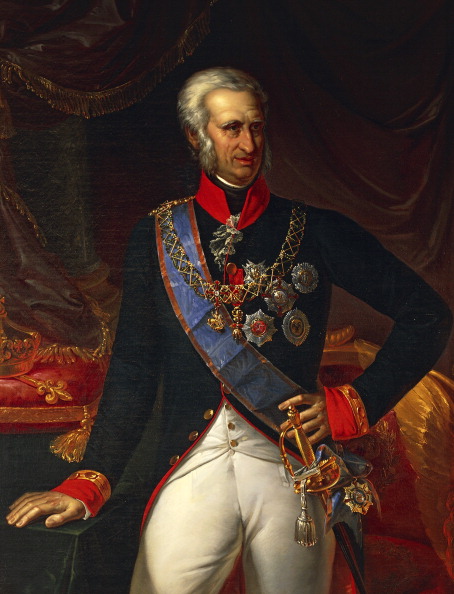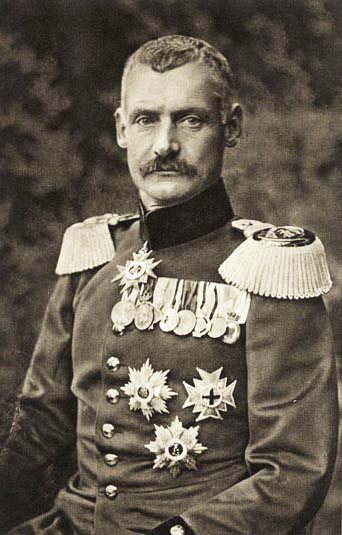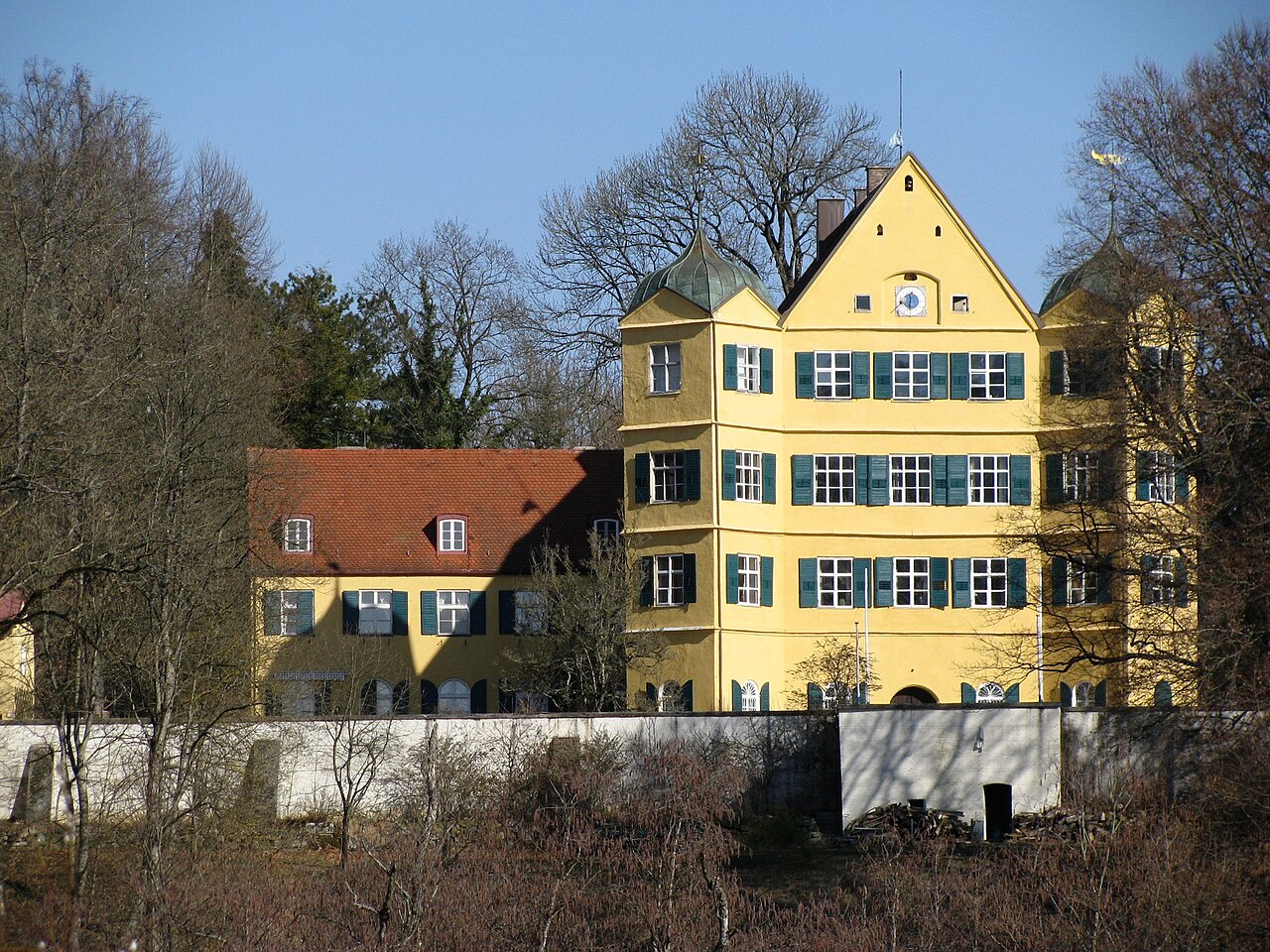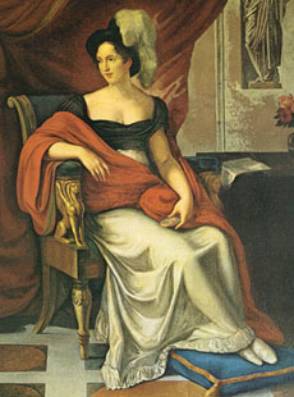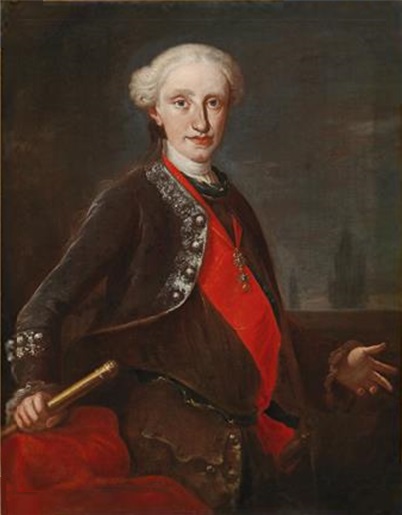by Susan Flantzer
© Unofficial Royalty 2021
Anna of Austria, Queen of Sweden, Queen of Poland; Credit – Wikipedia
Anna of Austria was the first wife of Sigismund III Vasa, King of Sweden and King of Poland. Born on August 16, 1573, in Graz, Austria, Anna was the eldest of the eight daughters and the second of the fifteen children of Karl II, Archduke of Austria of the House of Habsburg, and his niece Maria Anna of Bavaria.
Anna had fourteen siblings:
- Archduke Ferdinand of Austria (born and died 1572), died in infancy
- Archduchess Maria Christina of Austria (1574 – 1621), married Sigismund Báthory, Prince of Transylvania, no children, marriage dissolved
- Archduchess Katharina Renata of Austria (1576 – 1599), unmarried
- Archduchess Elisabeth (1577 – 1586), died in childhood
- Ferdinand II, Holy Roman Emperor (1578 – 1637), married (1) Maria Anna of Bavaria, had seven children (2) Eleonore Gonzaga of Mantua, no children
- Archduke Karl (1579 – 1580), died in infancy
- Archduchess Gregoria Maximiliana of Austria (1581 – 1597), died in her teens
- Archduchess Eleanor of Austria (1582 – 1620), a nun
- Archduke Maximilian Ernst of Austria (1583 – 1616), unmarried
- Archduchess Margarete of Austria (1584 – 1611), married King Felipe III of Spain, had eight children including King Felipe IV of Spain and Anne of Austria, wife of King Louis XIII of France and mother of King Louis XIV of France
- Archduke Leopold of Austria (1586 – 1632), married Claudia de’ Medici, had five children
- Archduchess Constance of Austria (1588 – 1631), married Sigismund III Vasa, King of Poland, Grand Duke of Lithuania, deposed King of Sweden, the widower of her older sister Anna, had seven children
- Archduchess Maria Magdalena of Austria (1589 – 1631), married Cosimo II de Medici, Grand Duke of Tuscany, had eight children
- Archduke Karl Joseph of Austria (1590 – 1624), Bishop of Wroclaw, Bishop of Brixen, and Grand Master of the Teutonic Order
Anna’s mother was a strong supporter of the Counter-Reformation, the reaction of the Roman Catholic Church to the Protestant Reformation. Anna and her siblings attended Mass from the age of one and their first words were to be Jesus and Mary. They were tutored by Catholic priests, and Latin was to be a priority before their native German language.
Although a Protestant, Johan III, King of Sweden had clear Catholic sympathies, inspired by his Catholic Polish wife Katarina Jagellonica, the daughter of King Sigismund I of Poland. Although their only son Sigismund was the heir to the Swedish throne and Sweden was a Protestant nation, he was raised as a Catholic to help him acquire the Polish crown. After the death of Stephen Báthory, King of Poland who had no legitimate children, Sigismund was elected King of Poland in 1587.

Anna’s husband Sigismund III Vasa, King of Sweden, King of Poland; Credit – Wikipedia
Antonius Possevinus, the papal envoy to Sweden suggested that Sigismund’s wife should come from the Habsburg dynasty. Pope Gregory XIII approved the idea of a marriage alliance between the Habsburgs and Sweden, and Anna of Austria was chosen as the prospective bride. Possevino visited the court of Karl II, Archduke of Austria in Graz, and obtained a portrait of Anna to bring to Sweden. After another marriage possibility for Anna came to naught, and Holy Roman Emperor Rudolf II decided that marriage to Sigismund would be the match for Anna that would best benefit the Habsburg dynasty, the marriage was settled. In April 1592, the betrothal of Anna of Austria and Sigismund III Vasa, King of Poland, was formally celebrated in the Imperial Court in Vienna. A proxy wedding was held in Vienna on May 4, 1592, after which Anna and her mother traveled to Krakow, Poland. On May 31, 1592, at Wawel Cathedral in Kraków, Poland, Anna married Sigismund and was crowned Queen of Poland.

Anna and Sigismund’s only surviving child Prince Ladislaus Vasa, aged about ten years old; Credit – Wikipedia
Anna and Sigmund had five children but only one, Ladislaus Vasa, who succeeded his father as King of Poland and Grand Duke of Lithuania, survived childhood. Similarly, Ladislaus Vasa had five children from his two marriages but none survived childhood.
- Anna Marie (1593 – 1600), died in childhood
- Katarina (born and died 1594), died in infancy
- Ladislaus Vasa IV, King of Poland, Grand Duke of Lithuania (1595 – 1648), married (1) Cecilia Renata of Austria, had three children, none survived childhood, Cecilia Renata died due to childbirth complications (2) Marie Louise Gonzaga, had two children, neither survived infancy
- Katarina (1596 – 1597), died in infancy
- Christopher (born and died 1598), died shortly after birth
On November 17, 1592, Sigismund’s father Johan III, King of Sweden, Grand Duke of Lithuania died and Sigismund was granted permission by the Polish legislature to claim his inheritance as the rightful King of Sweden. In 1594, Anna accompanied her husband to Sweden, where she and her husband were crowned King and Queen of Sweden at Uppsala Cathedral in Uppsala, Sweden on February 19, 1594. The Catholic Sigismund promised to recognize Lutheranism as Sweden’s state religion. However, many were suspicious of Sigismund’s promise to uphold Lutheranism when a papal nuncio was in the coronation procession. Anna and Sigismund had to leave their nine-month-old daughter Anna Marie in Poland as collateral for their return. Anna was pregnant and she feared that she would be forced to do the same in Sweden if she gave birth during her time in Sweden. Anna gave birth to a daughter Katarina on April 19, 1594. Katarina’s christening was celebrated with great festivity, however, she died on May 15, 1594.
When Anna and Sigismund returned to Poland in July 1594, Sigismund’s uncle Karl, Duke of Södermanland and the council were to govern in his absence. Because of the religious differences, Sigismund did not want to give his uncle and the council full government power. He appointed some council members who favored the Roman Catholic Church and who would receive orders directly from him. In 1595, the Riksdag (legislature) gained control of the Swedish government and appointed Karl, Duke of Södermanland Regent of Sweden. As Queen of Poland, Anna acted as a confidant to her husband Sigismund. She advised him on dealing with the Polish noble factions and foreign policy. Anna had no interest in maintaining Sigismumd’s personal union between Catholic Poland and Protestant Sweden. However, long before the situation was resolved, Anna died, aged 24, on February 10, 1598, due to birth complications during the birth of her sixth child, who also died. She was buried in South Ambulatory Crypt at Wawel Cathedral in Kraków, Poland.

The coffin of Anna, Queen of Sweden is in the back on the left; Credit – Wikipedia
Ultimately, on February 24, 1604, the Swedish Riksdag declared that Sigismund abdicated the Swedish throne and that his uncle Karl, Duke of Södermanland was recognized as the sovereign, Karl IX, King of Sweden. Although he lost the Swedish throne, Sigismund reigned as King of Poland and Grand Duke of Lithuania until he died in 1632. In 1605, he married Anna’s sister Constance of Austria and they had seven children.
This article is the intellectual property of Unofficial Royalty and is NOT TO BE COPIED, EDITED, OR POSTED IN ANY FORM ON ANOTHER WEBSITE under any circumstances. It is permissible to use a link that directs to Unofficial Royalty.
Kingdom of Sweden Resources at Unofficial Royalty
- Kingdom of Sweden Index
- Swedish Orders and Honours
- Swedish Royal Dates
- Swedish Royal Burial Sites
- Swedish Royal Christenings
- Swedish Royal FAQs
- Swedish Royal Residences
- Swedish Royal Weddings
- Line of Succession to the Throne of Sweden
- Profiles of the Swedish Royal Family
Works Cited
- En.wikipedia.org. 2021. Anne of Austria, Queen of Poland – Wikipedia. [online] Available at: <https://en.wikipedia.org/wiki/Anne_of_Austria,_Queen_of_Poland> [Accessed 7 June 2021].
- En.wikipedia.org. 2021. Charles II, Archduke of Austria – Wikipedia. [online] Available at: <https://en.wikipedia.org/wiki/Charles_II,_Archduke_of_Austria> [Accessed 7 June 2021].
- Flantzer, Susan. 2021. Sigismund III Vasa, King of Sweden, King of Poland. [online] Available at: <https://www.unofficialroyalty.com/sigismund-iii-vasa-king-of-sweden/> [Accessed 7 June 2021].
- Pl.wikipedia.org. 2021. Anna Habsburżanka (1573–1598) – Wikipedia, wolna encyklopedia. [online] Available at: <https://pl.wikipedia.org/wiki/Anna_Habsbur%C5%BCanka_(1573%E2%80%931598)> [Accessed 7 June 2021].
- Sv.wikipedia.org. 2021. Anna av Österrike (1573–1598) – Wikipedia. [online] Available at: <https://sv.wikipedia.org/wiki/Anna_av_%C3%96sterrike_(1573%E2%80%931598)> [Accessed 7 June 2021].






